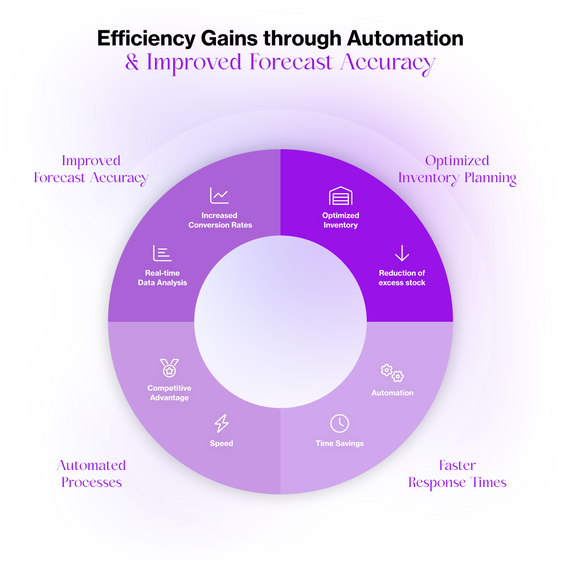In an increasingly data-driven world, accurate sales forecasting and efficient demand planning are critical to business success. The ability to accurately predict future market demand and sales helps companies manage inventory levels and improve response times. Traditional sales processes, often based on manual and siloed data, are quickly reaching their limits.
Complexity is increasing due to global markets, dynamic demand, and ever-changing customer needs. Companies that depend on agility and rapid customization need a data-driven approach to respond to market changes in real time.
This is where tools like Snowflake, Celonis, and Salesforce come in. They provide the foundation for integrated and automated sales planning. They allow you to not only collect data, but also analyze it and take the right actions in real time.
Sales Forecasting and Demand Planning Challenges
One of the biggest obstacles to sales forecasting and demand planning is inefficient processes and siloed data sources. This leads to bottlenecks and delayed responses to market changes. Sales departments often rely on outdated information or estimates, increasing the risk of inaccurate forecasts.
Typical sources of error:
Lack of data integration: Data from different departments is not centrally available.
Inaccurate forecasts: Lack of real-time data leads to inaccurate forecasts.
Long decision cycles: Manual processes delay quick responses.
Inaccurate forecasts can have a massive impact on the supply chain:
Overstocking: Tying up capital and increasing inventory costs.
Out-of-stocks: Leading to production downtime and lost sales.
As a result, real-time data analytics and centralized data management are essential to instantly identify and respond to changes in demand. Companies need a unified data platform that seamlessly integrates data sources from sales, manufacturing, and external markets. Access to real-time data enables faster, more informed decisions.
The Data-Driven Approach with Snowflake and Celonis
A central building block for modern sales forecasting and demand planning processes is the use of a scalable, cloud-based data platform such as Snowflake. Snowflake enables the seamless integration of internal and external data sources in real time and provides companies with the ability to store and analyze large volumes of data. By combining data from disparate sources into a central repository, Snowflake ensures that sales teams always have access to the most current and relevant data.
At the same time, Celonis provides a process mining platform that enables companies to identify and eliminate bottlenecks and inefficiencies in their sales processes. With the help of Celonis, inefficient work steps can be identified and bottlenecks in the sales pipeline can be made transparent. This increases response time, improves planning accuracy, and ensures optimal resource utilization.
Salesforce plays a key role in integrating these insights directly into the sales process. As a leading CRM system, Salesforce enables the connection of real-time data to operational CRM processes. As a result, sales decisions can be made instantly based on up-to-date forecasts. Service and field reps also receive automated notifications so they can respond quickly to changes in demand or market conditions.

Case Study:
A global manufacturing company uses Snowflake to integrate market data and historical sales data. It uses Celonis to optimise processes, identify bottlenecks in the supply chain and reduce delivery times by 20%. Salesforce ensures that the sales department uses this data immediately to adjust the sales strategy and serve customers proactively.

Results and benefits of a data-driven approach
The benefits of a data-driven approach to sales forecasting and demand planning are many. By integrating Snowflake, Celonis, and Salesforce, companies not only gain deeper insight into their processes, but also significantly increase their efficiency.
Improved forecasting accuracy: Using real-time data and automated analysis, companies can more accurately predict future sales trends, resulting in significantly higher conversion rates.
Optimised inventory planning: Accurately align production and sales to reduce overstocking and bottlenecks.
Automated processes: Reduce manual intervention, allowing sales teams to focus on strategic tasks.
Faster response times: Companies benefit from shorter response times to market changes, giving them a clear competitive advantage.
Conclusion & Outlook
Data-driven sales forecasting and demand planning enables companies to respond more flexibly and accurately to market fluctuations. The integration of Snowflake, Celonis and Salesforce provides a future-proof solution for optimising sales strategy and securing long-term competitive advantage.
Future developments will increasingly rely on the use of artificial intelligence to make sales forecasting even more accurate and automated. Companies that adopt data-driven solutions early will secure tomorrow's advantages today.
Optimize your forecasting and demand planning processes

